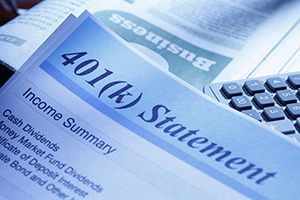Time is running out to minimize your tax obligation before the end of the year! This month’s newsletter features several tax moves to consider making by December 31st to lessen the amount of money you owe the IRS.
Review the Social Security benefits and their recent changes, plus learn about the greatest, unreported theft in America – and you are a victim! All this and ideas for your business are outlined in this month’s newsletter.
Please call if you would like to discuss how this information could impact your situation. If you know someone who could benefit from this newsletter, feel free to send it to them.
Tax Moves to Make Before Year-End

There are always moves you can make to reduce your taxable income. Some of these tax-saving moves, however, must be completed by December 31. Here are several to consider:
- Tax loss harvesting. If you own stock in a taxable account that is not in a tax-deferred retirement plan, you can sell your underperforming stocks by December 31 and use these losses to reduce any taxable capital gains. If your net capital losses exceed your gains, you can even net up to $3,000 against other income such as wages. Losses over $3,000 can be used in future years. Just be sure you do not repurchase the same stock within 30 days, or the loss will be deferred.
- Take a peek at your estimated 2022 income. If you have appreciated assets that you plan on selling in the near future, estimate your 2022 taxable income and compare it to your 2021 taxable income. If your 2022 income looks like it may be significantly higher than 2021, you may be able to sell your appreciated assets in 2021 to take advantage of a lower tax rate. The opposite also holds true. If your estimated 2022 taxable income looks like it may be significantly lower than your 2021 taxable income, lower tax rates may apply if you wait to sell your assets in 2022.
- Max out pre-tax retirement savings. The deadline to contribute to a 401(k) plan and be able to reduce your taxable income on your 2021 tax return is December 31. See if you can earmark a little more money from each of your paychecks through the end of the year to transfer into your retirement savings accounts. For 2021, you can contribute up to $19,500 to a 401(k), plus another $6,500 if you’re age 50 or older. Even better, you have until April 18, 2022, to contribute to a traditional IRA and be able to reduce your taxable income on your 2021 tax return.
- Make cash charitable contributions. If you’re like 90% of all taxpayers, you get no tax benefit from charitable contributions because you don’t itemize your personal deductions. On your 2021 tax return, however, you may contribute up to $300 in cash to a qualified charity and deduct the amount whether or not you itemize your deductions. Married taxpayers who file jointly may contribute $600. You can make your contribution by check, credit card, or debit card. Remember that this above-the-line deduction is for cash contributions only. It does not apply to non-cash contributions.
- Bunch deductions so you can itemize. Are your personal deductions near the amount of the standard deduction for 2021: $12,550 for singles, $18,800 for head of household and $25,100 for married filing jointly? If so, consider bunching your personal deductions into 2021 so you can itemize this year. For most, the easiest way is to bunch two years of charitable contributions into a single year. These can include gifts of appreciated stock where you get to deduct the fair market value without paying capital gains tax.
Social Security Announces 2022 Adjustments

Sources: SSA.gov
The Greatest Theft in America
And you are a victim!
For generations we’ve been taught by our parents to save. Save for a bicycle. Save for college. Save for retirement. And then, in retirement, you could count on this savings to earn interest. Millions of Americans used Certificates of Deposits (CDs) and low risk bonds to ensure they could retire without worry. Think about this…$50,000 in CDs in 1990 earned 8% interest, or $4,164, each year. And a $10,000 balance in your savings account earned 5.5% interest, or $565, each year.
The theft
Today that $50,000 earns 0.6% interest, or $301. The other $3,863 is no longer yours! And your bank now only needs $50 to pay you for the use of the $10,000 in your savings account. Where did that money go? Who took it and why aren’t you upset about it?
Your interest income now benefits someone else
The simple truth is your savings interest is being given to those borrowing money in the form of lower interest rates on their loans. You lose your interest income and pave the way so someone can buy a home for lower interest, a business can buy equipment at lower financing rates or so the government can pay low interest rates on their spending in excess of their tax revenue.
In fact, the government’s spending is the elephant in the room. The government cannot afford to pay high interest on their excess spending, so there is tremendous pressure to keep interest rates on these borrowings as low as possible. This policy reverberates through the banks who price their lending on low fed rates.
The message being given
The inadvertent message to savers? Stop saving! Yes, we are taking your money and lending it to someone else. But since our loan rates are so low, we cannot pay you much of anything for the use of your money. So stop saving and go into debt. The interest is so low!
The conclusion
Yes, you are a victim of interest income theft. It is being given to borrowers, especially the government. Here are some ideas to reduce the cost of being a victim of this theft:
- Fight the debt urge. While the message is screaming to borrow money and go into debt, only do so if it makes financial sense.
- Hunt for returns. While savings rates are all below the rate of inflation, you still need to work to find the best rate for your money. Fight the urge to be passive with your savings, and constantly shop for better rates. Also look to lower your own debt costs, so explore refinancing your mortgage or other loans.
- Become a direct lender. There are now services that let you lend money directly to borrowers. If exploring this route, do your homework and diversify as much as possible as there is additional risk to this approach.
- Find other uses for your money. The value of your cash is actually losing money against inflation. Consider moving some of your savings into assets that appreciate in value. This could be a home, a business, or yourself!
- Be vocal. It is one thing to spend more than you earn or receive. But it is quite another to overspend with no regard of the impact. So lend your voice to bring back some common sense to the government’s spending habits. Money does not grow on trees. It needs to come from someplace. That place, however, should not be from savers.
Source: Bankrate historic rates for CD’s and deposit account in 1990 and in August 2021, as well as The Buffalo News, April 11, 1990.
Year-End Tax Planning Ideas For Your Business
Here are some ideas to lower your business taxes, get organized, and to prepare for filing your 2021 tax return.
As 2021 winds down, here are some ideas to consider in order to help manage your small business and prepare for filing your upcoming tax return.
- Identify all vendors who require a 1099-MISC and a 1099-NEC. Obtain tax identification numbers (TIN) for each of these vendors.
- Determine if you qualify for the Paycheck Protection Program (PPP) safe harbor threshold that allows you to deduct certain 2020 expenses on your 2021 tax return.
- Consider accelerating income or deferring earnings, based on profit projections.
- Section 179, or bonus depreciation expensing versus traditional depreciation, is a great planning tool. If using Section 179, the qualified assets must be placed in service prior to year-end.
- Business meals are 100% deductible in 2021 if certain qualifications are met. Retain the necessary receipts and documentation that note when the meal took place, who attended and the business purpose of the meal on each receipt.
- Consider any last-minute deductible charitable giving including long-term capital gain stocks.
- Review your inventory for proper counts and remove obsolete or worthless products. Keep track of the obsolete and worthless amounts for a potential tax deduction.
- Set up separate business bank accounts. Co-mingling business and personal expenses in one account is not recommended.
- Create expense reports. Having expense reports with supporting invoices will help substantiate your tax deductions in the event of an audit.
- Organize your records by major categories of income, expenses and fixed assets purchased to make tax return filing easier.
- Review your receivables. Focus on collection activities and review your uncollectable accounts for possible write-offs.
- Make your 2021 fourth-quarter estimated tax payment by January 18, 2022.


